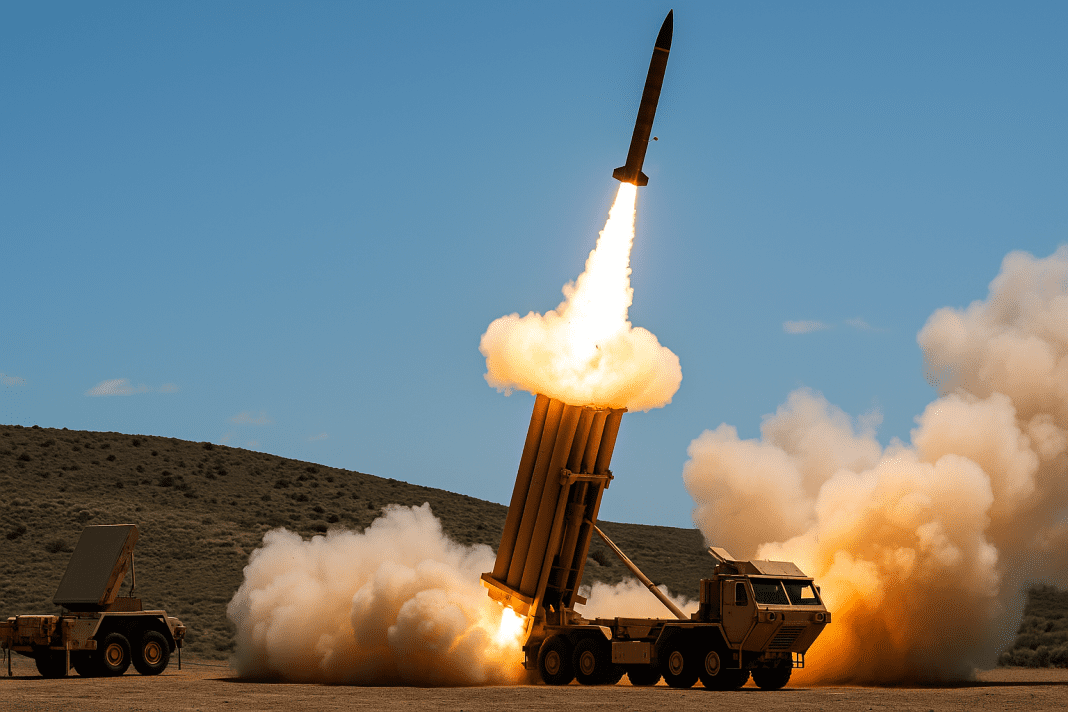In a recent 12-day conflict between Iran and Israel, one of the most advanced U.S. missile defense systems — known as THAAD missile defense — faced a challenge unlike anything seen before.
A 12-Day War That Tested Missile Defenses Like Never Before
For the first time, the United States placed two THAAD missile defense systems in the same country, Israel, to help protect against a flood of incoming missiles.
These systems are designed to shoot down dangerous ballistic missiles before they can hit cities or military targets. They work by launching high-speed interceptors into the air to destroy threats at great heights.
Despite this powerful technology, many Iranian missiles still managed to break through Israel’s air defense network.
During the fighting, THAAD operators fired more than 150 interceptor missiles. This is an enormous number, equal to almost one-quarter of all the THAAD interceptors the U.S. has ever purchased.
The huge demand for interceptors led to discussions about whether missiles bought by other countries, like Saudi Arabia, could be redirected to Israel. This was a sensitive matter because those missiles were intended to protect Saudi cities and vital oil infrastructure.
The pressure on missile supplies was not limited to THAAD alone. U.S. Navy warships in the Mediterranean Sea and Red Sea also launched many SM-3 interceptor missiles. Israel quickly burned through large numbers of its own Arrow missile defense and Iron Dome missiles, as the skies remained filled with threats.
Inside the THAAD Missile Defense System and Its Limitations
The THAAD missile defense system — short for Terminal High Altitude Area Defense — is built to stop ballistic missile defense threats at high altitudes, sometimes even outside the atmosphere.
Each THAAD battery needs about 100 U.S. soldiers to operate around the clock. A single battery can hold up to 48 missiles at a time.
Each interceptor missile is expensive, costing around $13 million. In total, only about 650 THAAD interceptors have been built since the system’s creation.
The U.S. Army has seven active THAAD units worldwide: two in Israel, two in Guam and South Korea, one in Saudi Arabia, and two inside the U.S. Another system exists but is not yet fully operational.
Because these systems are constantly deployed to critical regions, they rarely get rotated out for maintenance or complete crew training. This affects their readiness over time.
During the conflict, the Pentagon sent more missiles to the war zone, but the supply could not keep up with how fast they were being used. Experts estimate it could take over a year and up to $2 billion to replace the interceptors fired during these 12 days.
The war also showed another weakness: missile defense systems like THAAD were built mainly to stop smaller, targeted missile attacks. They were not originally designed for massive, continuous waves of missile launches, like the Iran missile attack unleashed on Israel.
🛡️ U.S. defense on edge — $7.3B pushed to refill missile stock after Ukraine and Yemen strain
The U.S. Navy’s Struggle in the Mediterranean and Red Sea
While THAAD was fighting battles on land, U.S. Navy destroyers faced their own challenges at sea.
Arleigh Burke-class destroyers in the Mediterranean and Red Sea launched about 80 SM-3 interceptor missiles to protect against Iranian threats. These naval interceptors are also costly, ranging from $8 million to $25 million each.
In the heat of battle, Navy crews had only seconds to decide if a radar signal was a real warhead, missile debris, a booster stage, or a decoy. This confusion — often called the “fog of war” — led to some situations where multiple missiles were fired at a single target, just to ensure it was destroyed.
A major operational problem for the Navy is that warships cannot reload missiles at sea. The missile canisters are too large and heavy to be handled in unstable waters, so reloading can only happen in port.
This meant that once a destroyer’s missile launchers were empty, its ability to protect itself and others was sharply reduced.
Both land and sea defenses saw their missile stockpiles shrink at alarming speeds. The Iran Israel missile war pushed advanced defense systems like THAAD missile defense and SM-3 interceptors to their operational limits.
In less than two weeks, hundreds of millions of dollars’ worth of interceptors were used, showing how quickly even the most advanced military systems can run low when faced with a massive, sustained missile attack.

